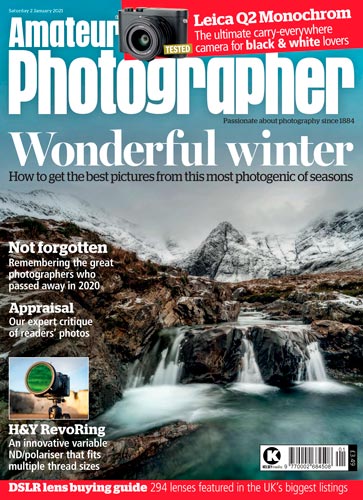Focus stacking is a fantastic technique for landscape photography because it provides perfect sharpness throughout the scene you’re shooting. In fact, the results are so sharp the resulting images can look hyperreal. So, here’s how to focus stack images in Affinity Photo.
landscape photography
How to apply the Orton Effect in Affinity Photo
Learn how to apply the Orton Effect in Affinity Photo to achieve the best effect possible as well as smaller file sizes. By combining the Layers created for the effect into a single Layer file sizes can remain small when saving images as TIFFs or in other formats that support Layers. But most importantly, this approach avoids crushing shadow detail to maintain the most natural effect possible.
Create a fake Big Stopper effect in Photoshop
Capturing motion in the scene when shooting landscapes is the perfect way to add a sense of dynamism to your photography. For those occasions where you don’t have an ND filter with you, learn how to create a fake Big Stopper effect in Photoshop using this simple technique.
Amateur Photographer cover 2 Jan 2021

One of my images of the iconic Fairy Pools on the Isle of Skye in Scotland was used on the cover of the 2nd January 2021 issue of Amateur Photographer magazine. The cover image accompanies an winter landscape photography article I produced, which included tips for shooting in winter and inclement weather where filters can’t be used. See below for the original image and the winter landscapes feature.
Holme Fen Nature Reserve Location Guide

Holme Fen National Nature Reserve covers a large area of 657 acres near Peterborough in Cambridgeshire, and is home to the largest silver birch wood in the UK. At 2.75 metres below sea level it’s the lowest point in Great Britain, and it’s also a Site of Special Scientific Interest thanks to being home to wildlife, insects marsh plants and over 500 types of fungi. For photographers, it’s the best woodland location in Cambridgeshire and attracts landscape photographers from all over the UK.
Sony FE 20mm f/1.8 example landscape images

For the week preceding the announcement of the Sony FE 20mm f/1.8 I was out shooting with the lens in Suffolk and Northumberland to capture images to accompany my review of the lens on Tech Radar. Scroll down to check out some of the images I took and to read about some of the features of the lens.
Discover Cymru Calendar 2020

I’m delighted to announce that my image of mist rolling into Dee Valley, near Llangollen in North Wales at sunrise has been selected to be featured in the Discover Cymru Calendar 2020. This image was taken during my second visit to the location where weather conditions were looking promising for mist, and they certainly didn’t disappoint.
Peak District dawn to dusk landscape photography workshop 24th Jan 2020

Improve your landscape photography skills with a small group workshop in the Peak District with professional landscape photographer James Abbott on Friday 24th January 2020. The workshop will be limited to just five people so everyone can take advantage of lots of one-to-one and group tuition throughout the day. The workshop costs just £150 per person.
Creative ways to shoot water in landscapes

Capturing movement in the landscape is a simple and highly effective way of adding a sense of dynamism to your landscape photography. And while the mechanical nature of photography can, if left unchecked, render scenes looking like little more than a snapshot, with the right compositional approach and shutter speed you can transform scenes in creative ways that transcend the capabilities of human vision.
Shoot sharper landscape images

Capturing pin-sharpness throughout a scene – from the foreground to the distant background – is often the photographer’s aim when shooting landscapes. For wider scenes where the foreground interested is a few metres away from the camera you can usually get away with shooting a single image at f/11 – f/16 on a full-frame camera, or f/8 – f/11 on APS-C. With these settings and correct focusing front to back sharpness is possible in a single shot, but what about when the foreground interest is closer to the camera and you need both this and the background in sharp focus? The simple answer is to use focus stacking to achieve sharper landscape images.



